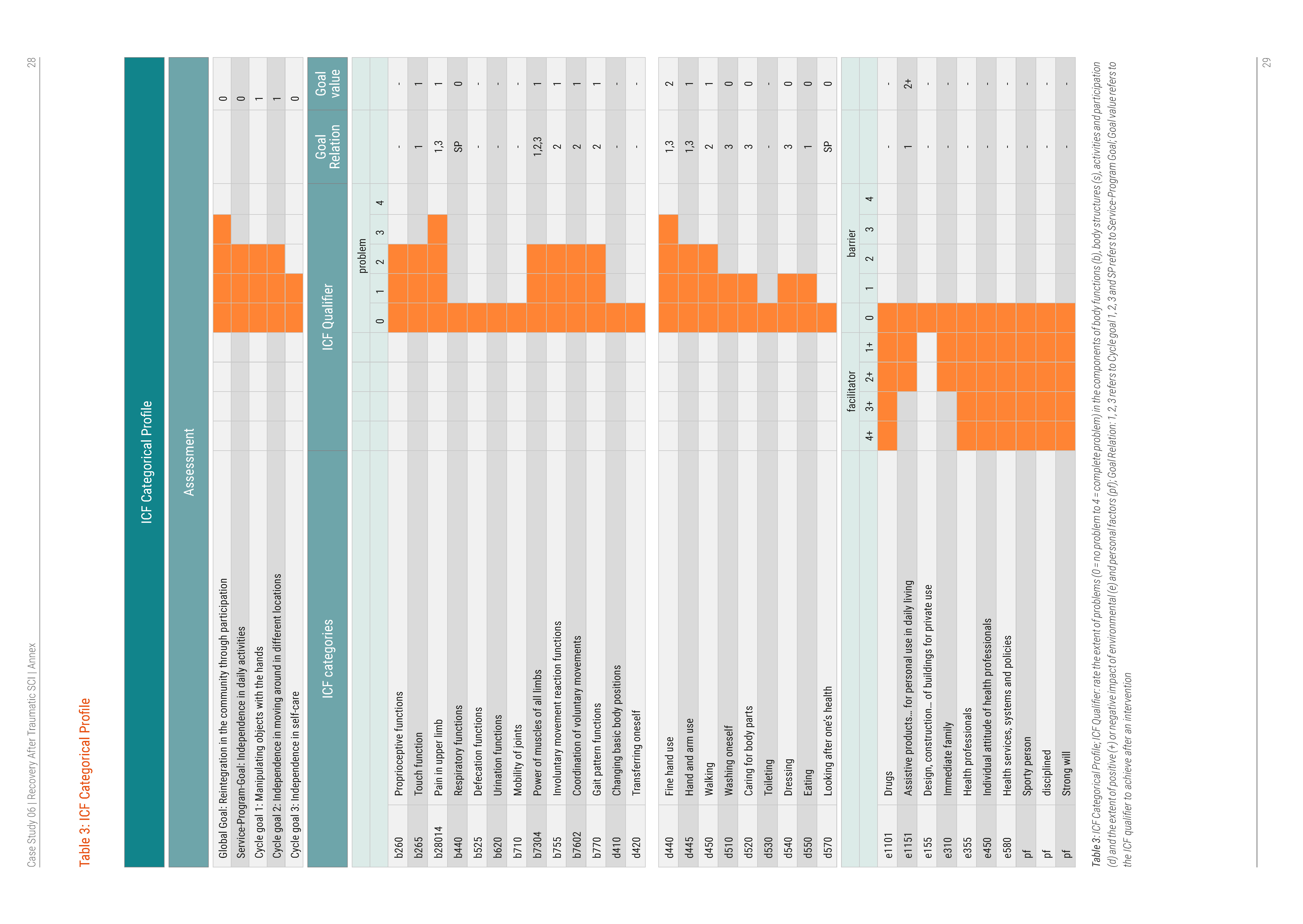Goal-setting/Determination of Intervention Targets
With use of the ICF Categorical Profile Mr. Seiler's functioning status was discussed during a rehabilitation team meeting. An illustration of the assessment results, the ICF Categorical Profile shows the ICF qualifier rating of the categories that reflect the relevant aspects of functioning observed and evaluated during the assessment phase. Goals were set accordingly.
The ICF Categorical Profile is shown in table 3. Utilising a bar-chart, the ICF Categorical Profile provides a visualisation of the extent of Mr. Seiler's problems (or lack thereof) in respective ICF categories.
Goal-setting
Based on this initial assessment of Mr. Seiler's functioning, a set of goals were defined by the rehabilitation team, taking into account both their own and Mr. Seiler's perspectives. A global goal, a service-program goal and three cycle goals were established. Considering Mr. Seiler’s various hobbies and his desire to work again, 'reintegration in the community through participation' was set as the global goal. Since independence from nursing assistance was extremely important for Mr. Seiler, the service-program goal was defined as 'independence in daily activities'. All of the goals were interconnected. Achieving this service-program goal would bring Mr. Seiler closer to reaching his global goal. Likewise, success in the three cycle goals set would help Mr. Seiler achieve his service-program goal. The three cycle goals were:
- manipulating objects with the hands
- independence in moving around in different locations
- independence in self-care

Table 3: ICF Categorical Profile; ICF Qualifier: rate the extent of problems (0 = no problem to 4 = complete problem) in the components of body functions (b), body structures (s), activities and participation (d) and the extent of positive (+) or negative impact of environmental (e) and personal factors (pf); Goal Relation: 1, 2, 3 refers to Cycle goal 1, 2, 3 and SP refers to Service-Program Goal; Goal value refers to the ICF qualifier to achieve after an intervention
Determination of Intervention Targets
Part of goal-setting included defining the goal value i.e. rating as represented by an ICF qualifier that the rehabilitation team expected to achieve after the completion of intervention. The rehabilitation team hoped that, given Mr. Seiler’s type of injury and his personal factors of athleticism, discipline and strong will, the goals set would all be reached.
If a goal with a goal value was defined for a specific ICF category, this ICF category was considered an interventon target and would be addressed by a corresponding intervention. For example, b28014 Pain in upper limb, d7304 Power of muscles of all limbs, d440 Fine hand use, and d445 Hand and arm use were identifed as intervention targets since they were associated with cycle goals 1 (manipulating objects with the hands) and 3 (independence in self-care). These intervention targets were meant to address the hand pain Mr. Seiler experienced and the limited functionality of his hands.
The intervention targets served as essential elements in the next phases of the Rehab-Cycle® – Assignment and Intervention.